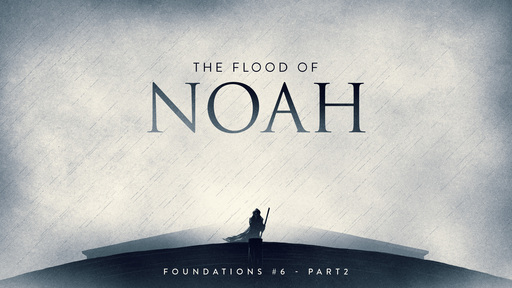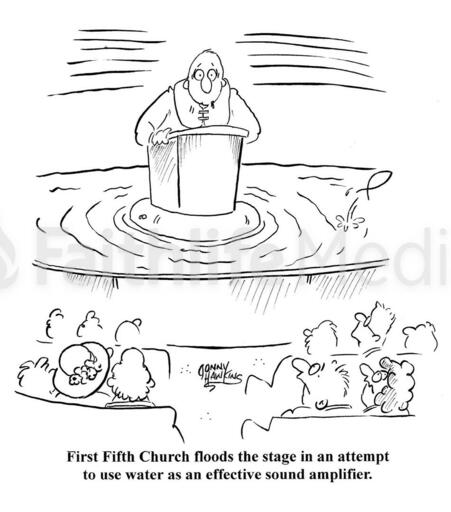Foundations #6: The Flood of Noah (Part 2)

Foundations • Sermon • Submitted • Presented • 1:07:36
0 ratings
· 62 viewsAn exploration of the Genesis Flood of Noah's Day and some of its implications
Files
Notes
Transcript
I. Introduction
I. Introduction
A. Foundations #1: The God of Creation
A. Foundations #1: The God of Creation
B. Foundations #2: The God Who Made Us
B. Foundations #2: The God Who Made Us
C. Foundations #3: The Corruption of God’s Creation
C. Foundations #3: The Corruption of God’s Creation
D. Foundations #4: The Fallen First Family
D. Foundations #4: The Fallen First Family
E. Foundations #5: The Line of the Promise
E. Foundations #5: The Line of the Promise
F. Foundations #6: The Flood of Noah (Part 1)
F. Foundations #6: The Flood of Noah (Part 1)
II. Questions about the Flood
II. Questions about the Flood
A. Is Noah and the flood of Genesis 6-9 figurative or literal, local or global flood?
A. Is Noah and the flood of Genesis 6-9 figurative or literal, local or global flood?
The Hebrew writer’s viewpoint
Moses (Genesis 6-9)
The Chronicler in (1 Chronicles 1:4)
The Prophet Isaiah in (Isaiah 54:9)
The Prophet Ezekiel (Ezekiel 14:14, 20)
Jesus, the Son of God (Matthew 24:37-39; Luke 17:26–27)
The Apostle Peter (2 Peter 2:5; 2 Peter 3:5–6)
The writer of Hebrews (Hebrews 11:7)
Secular cultures such as the Assyrians and Babylonians and other cultures have legends of the great flood. (see flood legend info)
B. How did God cause the Earth to flood?
B. How did God cause the Earth to flood?
Rain (Genesis 7:4, 12) (see Rain video)
Fountains of the great deep (Genesis 7:11) (see Power of Water Videos)
C. How long was the Flood event?
C. How long was the Flood event?
Beginning (600th year, 2nd month, 17th day) (Genesis 7:11)
End of the Rain and waters subsided at 150 days (5 months) (Genesis 7:24; 8:1)
Noah, his family, and the animals step off the ark. (Genesis 8:14–16)
Total time was a year and the tenth 10 day
D. How did Noah get so many animals on board the ark?
D. How did Noah get so many animals on board the ark?
God brought the animals to Noah (Genesis 6:19-20)
Noah would not necessarily have taken the largest of every kind, but probably juvenile animals from every kind.
This would facilitate their procreation because they would soon mature enough to breed.
This would also facilitate not needing quite as much space, especially in the case of the large animals like giraffes, elephants, and dinosaurs and the like.
E. How big was the ark and what might it have looked like?
E. How big was the ark and what might it have looked like?
The ark was made of Gopher wood (Genesis 6:14)
The size of the ark was 300 cubits long by 50 cubits wide by 30 cubits high (Genesis 6:15) (see model and video)
The ark rested on the mountains of Ararat. (Genesis 8:4) (see illustration)
F. Was the antediluvian world different than the postdiluvian world?
F. Was the antediluvian world different than the postdiluvian world?
Pre-curse world was very good! (Gen 1-2)
Post-curse world before the flood. (Gen 3-5)
The world after the flood (2 Peter 3:5-7)
G. What would we expect to find as evidence today of a global flood?
G. What would we expect to find as evidence today of a global flood?
“billions of dead things, buried in rock layers, laid down by water, all over the earth” (see article https://answersingenesis.org/media/audio/answers-with-ken-ham/volume-137/billions-of-dead-things/)
Throughout the world’s rock layers are billions of fossils, the remains of organisms that were catastrophically buried largely during the global Flood (2348 BC). Understandably, the vast majority of these are marine creatures that were buried quickly and sequentially by habitat. https://answersingenesis.org/search/?refinement=media&language=en&q=fossil
Foundational Importance
Foundational Importance
1. The Flood of Noah, which is covered in 3 chapters in Genesis, is extremely important because God’s word is at stake in our belief and teaching of the biblical flood. If God’s Word is not true here, then how can we trust it anywhere else. (Psalm 119:160)
1. The Flood of Noah, which is covered in 3 chapters in Genesis, is extremely important because God’s word is at stake in our belief and teaching of the biblical flood. If God’s Word is not true here, then how can we trust it anywhere else. (Psalm 119:160)
2. The Flood of Noah is a picture of a similar cataclysmic judgment from God to come in the future. (2 Peter 3:5-7; 1 Peter 3:20–21, 2 Thessalonians 1:5–10 with 1 Thess 4:13-18)
2. The Flood of Noah is a picture of a similar cataclysmic judgment from God to come in the future. (2 Peter 3:5-7; 1 Peter 3:20–21, 2 Thessalonians 1:5–10 with 1 Thess 4:13-18)
3. The Ark is a picture of the church, the only means of salvation from the judgment of God. (2 Peter 3:11–13)
3. The Ark is a picture of the church, the only means of salvation from the judgment of God. (2 Peter 3:11–13)
4. The whole episode of the flood of Noah is a marvelous picture of the faith that believers in God should possess even in the most ungodly of times and cultures we live among.
4. The whole episode of the flood of Noah is a marvelous picture of the faith that believers in God should possess even in the most ungodly of times and cultures we live among.
ADVERTISEMENT
Related Media
See moreRelated Sermons
See more

Cody Hale • 5 views


Harley Timmons • 9 views



